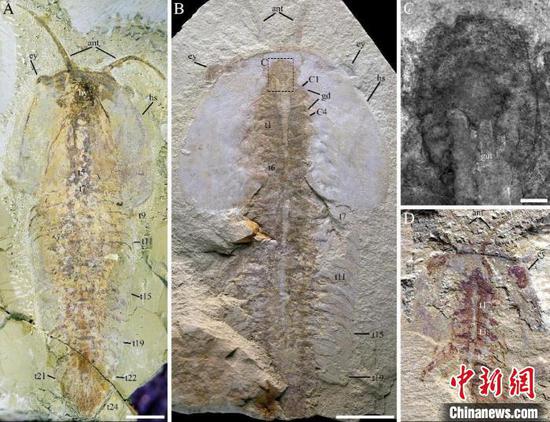Study uncovers detailed morphology of 518-million-year-old arthropod

Photo of artiopodan Cindarella eucalla (provided by Yunnan University)
(ECNS) -- Yunnan University said on Tuesday that its Key Laboratory for Palaeobiology that studied arthropod fossils from Chengjiang biota has revealed detailed morphology of artiopodan Cindarella eucalla.
Researchers reconstructed a three-dimensional model of Cindarella eucalla, revealing its features, such as spindle-shaped trunk tergites with the anterior six covered by the head shield and axial spines extending from the last four, natant hypostome, four post-antennal cephalic appendage pairs, with dorsoventral mismatch between trunk tergites and limbs.
The research suggests that Cindarella eucalla could escape in a very short time when it encountered an enemy, and that it probably lived in muddy environments with ample light.
Researchers stated that this study further underscores the significance of Chengjiang area, in southwest China's Yunnan Province, as a key site for exploring early life evolution on the Earth.
The Chengjiang biota, dating back approximately 518 million years, is renowned for its exceptionally well-preserved fossils and is a key site for exploring early life forms and diversity, providing a wealth of valuable information about the marine ecosystems of the Cambrian period.
Among its unique discoveries is Cindarella eucalla, a distinctive arthropod known for its unique anatomical features and lifestyle. It has become one of the representative species in paleontology for studying arthropods.
The research findings were published on Tuesday in the renowned international academic journal eLife under the title “Ventral Morphology and Ecological Implications of Cindarella eucalla (Artiopoda, Xandarellida) from Chengjiang Biota, China”.

